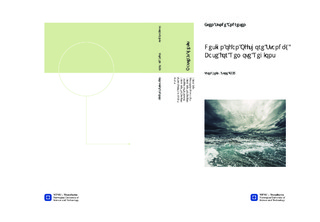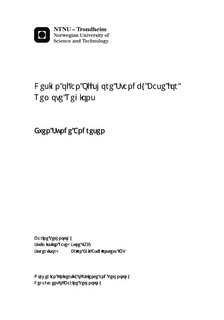| dc.contributor.advisor | Asbjørnslett, Bjørn Egil | nb_NO |
| dc.contributor.author | Andresen, Even Sunde | nb_NO |
| dc.date.accessioned | 2014-12-19T12:10:04Z | |
| dc.date.available | 2014-12-19T12:10:04Z | |
| dc.date.created | 2013-09-19 | nb_NO |
| dc.date.issued | 2013 | nb_NO |
| dc.identifier | 649634 | nb_NO |
| dc.identifier | ntnudaim:9711 | nb_NO |
| dc.identifier.uri | http://hdl.handle.net/11250/238643 | |
| dc.description.abstract | In this Master?s thesis an optimization model for finding the optimal design of a standby base operating in remote regions is presented. The research and development within optimization of standby vessel design is limited. The objective of this thesis has been to utilize the state of the art within the areas of maritime fleet optimization, ship design optimization and the analytical hierarchy process in the development of a working model. Application of emergency preparedness assessment processes in the North Sea as quantifiable mathematical restrictions is also addressed.By developing a linear optimization model, and implementing it into optimization software, a possible solution in finding the optimal design of a standby base has been approached. The scope of the thesis has been to find the basic design of the standby base, its attributes and the fleet of cooperating standby vessels with the minimum total cost and satisfactory emergency preparedness. As an addition, the model has also been extended with a weighted objective function considering the trade-off between cost and emergency preparedness.In order to investigate the behavior of the model in producing the optimal design and functionality of a standby base, it was tested on a case study for future petroleum development near Jan Mayen. The results revealed a significant cost reduction when the standby base was implemented as apposed to only standby vessels. It also revealed that different design options proved more appropriate as a standby base when the data was run for the original model and the weighted objective function extension.Because of the limited state of the art connected to optimizing the design of standby vessels, the model in this thesis is a version of what I consider to be a possible way of developing a tool in aiding naval architects. Because of the model?s use of expert judgments, obtaining applicable results demands extensive work connected to data pre-processing. | nb_NO |
| dc.language | eng | nb_NO |
| dc.publisher | Institutt for marin teknikk | nb_NO |
| dc.title | Design of an Offshore Standby Base for Remote Regions | nb_NO |
| dc.type | Master thesis | nb_NO |
| dc.source.pagenumber | 129 | nb_NO |
| dc.contributor.department | Norges teknisk-naturvitenskapelige universitet, Fakultet for ingeniørvitenskap og teknologi, Institutt for marin teknikk | nb_NO |

